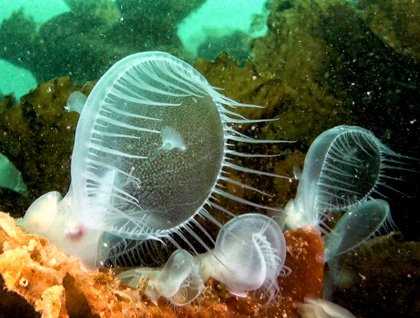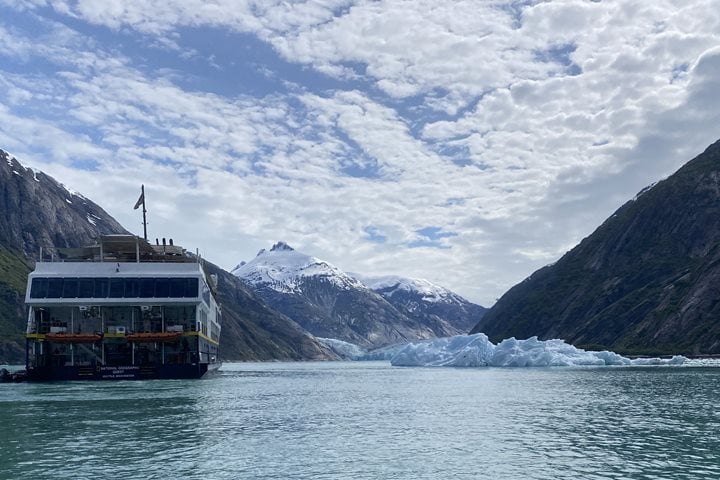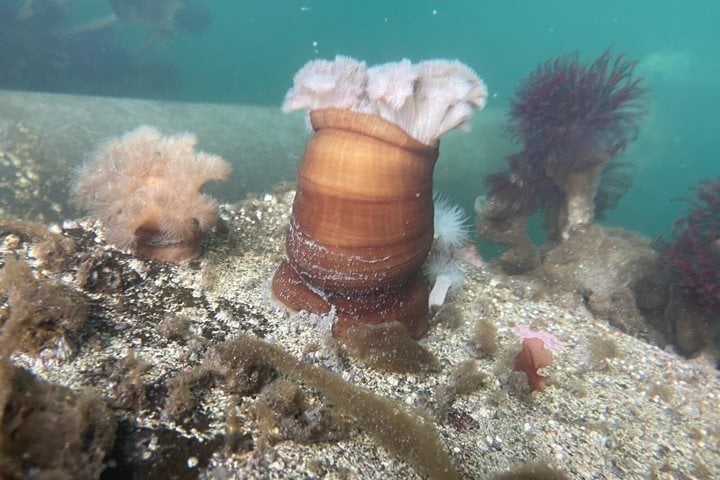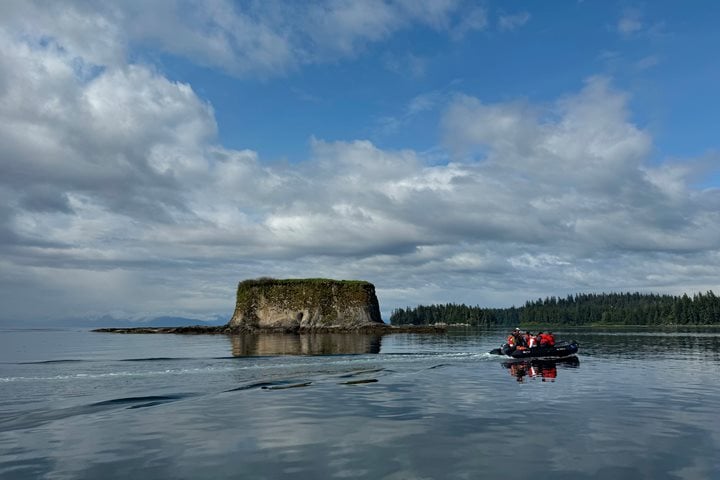In Southeast Alaska, the ocean rarely disappoints. Whereas the forest is a solemn fortress of trees, lorded over by the intuitive eye of the bruin, the ocean has many masters and even more players. Feeling the draw of the river, much like pink and chum salmon, we descended upon the stream at Pavlof Harbor in Freshwater Bay. Taking to our boats, we watched dense schools of spawning pink salmon await the safe harbor of high tide and looked for coastal brown bears seeking an ocean-fueled energy packet.
Plunging below Pavlof Harbor’s green water, chef Michelle and I entered inner space. Shades of green hemlocks and spruce give way to orange anemones and red octopus. Dusky rockfish swim towards my camera’s lights whereas a yellow eye rockfish appears shy. We find Pacific giant octopus monitoring our activities from a well-worn cave, occasionally sending out a probing tentacle, yet safely tucked away for night raids on the upper reef crab community. Hooded nudibranchs, a type of sea slug, are found on blades of kelp, their methodical capture of passing planktonic creatures makes them totally reliant on nutrient rich currents coming from far away places. Much like our voyage, it feels like every dive is too short, and we must return topside to share our experiences with the guests.
Tomorrow we will enter reality once again. Our voyage has come to a close under the crescendo of hundreds of tons of whale all working in unison utilizing tools in a cultural way. Two groups of bubblenet feeding humpback whales were found near Peril Strait with little time to spare. The timing couldn’t have been better. We watched animals that may live 50, 70, maybe even 100 years with every one of those days spent in the Pacific Ocean. Pacific herring have spent years growing, sustaining on smaller forms of life, all fueled by the short, intense summer season and cold Alaskan waters. The sea is their universe. At night they swim through galaxies of bioluminescence like an endless meteor shower. Much of the life found around Alaska’s Inside Passage is tied to the productivity and health of the Gulf of Alaska. Salmon spawned at Pavlof Harbor migrate across the Pacific, following the massive gyre until their journey is guided by instinct immemorial back to a natal stream. All the while they eat. Even the puffin, clown of Glacier Bay, will head west to feed. A small, flying football persisting in a tempestuous, polluted sea.
The national news is playing a story about radioactive material entering the North Pacific by the thousands of tons from Japan’s devastated nuclear power plant. We must remember the whales, bears, and trees. After seven days exploring Southeast Alaska we know in both our hearts and minds that the salmon really are in the trees. Everything is connected. The marine environment faces many modern pressures from fishing to pollution, in some places at all time levels. We have had incredible wildlife encounters this voyage and I hope they struck a chord in our collective hearts but spawn individual action. Clean water means clean food for humans, bears, whales, and nudibranchs. We can make life easier for whales and slugs, or we can make it more difficult for ourselves. What will you do to help?







